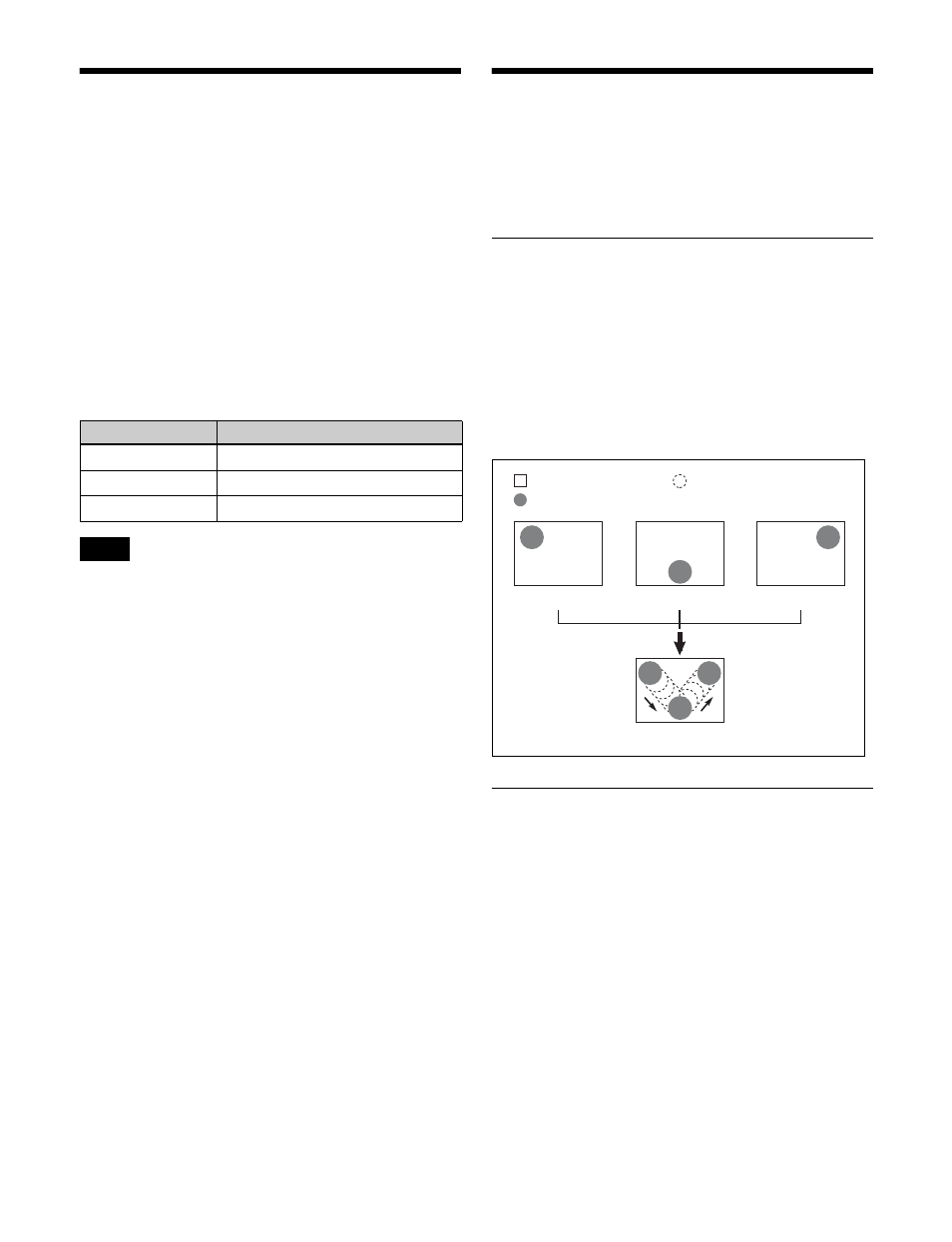Registers, Keyframes, Registers keyframes – Sony GP-X1EM Grip Extension User Manual
Page 298: Effects saving and recalling effects, Effects, Saving and recalling effects

298
Registers
A register is an area of memory in a device which holds a
keyframe, snapshot
, macro
, and so on.
Keyframe effect registers
Dedicated effect registers
There are 99 dedicated registers for keyframe effects in
each region, numbered 1 to 99.
Shared user programmable DME registers
In addition to the 99 DME registers for each region (i.e.
each channel), there are shared registers used in user
programmable DMEs.
When operating with shared registers, be sure to select the
appropriate regions depending on the number of channels.
When recalling registers in the 200 range, select two
consecutive channels for the regions (for example [DME1]
and [DME2]). Similarly, for registers in the 300 range,
select three consecutive registers.
P-Bus and Device registers
There are 250 registers for P-Bus and Device1 to Device12
in each region, numbered 1 to 250.
Work register
This is a temporary register used when editing keyframes.
When you recall an effect, it is read from the effect register
into the work register, and when you save, the contents of
the work register are written to the effect register.
Master timeline registers
There are 99 master snapshot registers, numbered 1 to 99,
for each control panel. They store keyframe effect regions
and the register numbers saved in the regions.
Snapshot registers
These are registers for snapshots, and there are 99,
numbered 1 to 99, for each region.
Master snapshot registers
There are 99 master snapshot registers, numbered 1 to 99,
for each control panel. They store snapshot regions and the
register numbers saved in the regions.
Keyframes
A keyframe is a function that loads the conditions of the
video at a point in time as data which can then be recalled
to reproduce the same conditions.
Effects
By arranging multiple keyframes on the time axis
(timeline) and interpolating between successive
keyframes, you can create an effect in which there is a
continuous change from each keyframe to the next
(keyframe effect). You can save the effect in memory
(effect register) and then reproduce the same effect by
recalling it from memory as required.
Example of keyframes and effect execution
Saving and Recalling Effects
To create a new effect, first recall an empty register, then
create the keyframes one at a time in this register. To run
an effect, it is also necessary to set the time and the path.
To edit an existing effect, recall the register holding the
effect, then make the changes.
When you have finished creating or editing the effect, save
it in the recalled register or another specified register.
Auto save function
When you recall an effect, the currently recalled effect is
automatically saved in a register. This is referred to as the
auto save function. You can disable this function in the
Setup menu.
Register number
Register allocation
101 to 199
Shared register for 1-channel effects
201 to 299
Shared register for 2-channel effects
301 to 399
Shared register for 3-channel effects
Note
Background A
Image created by interpolation
Background B
Keyframe 1
Keyframe 2
Keyframe 3
Effect execution
